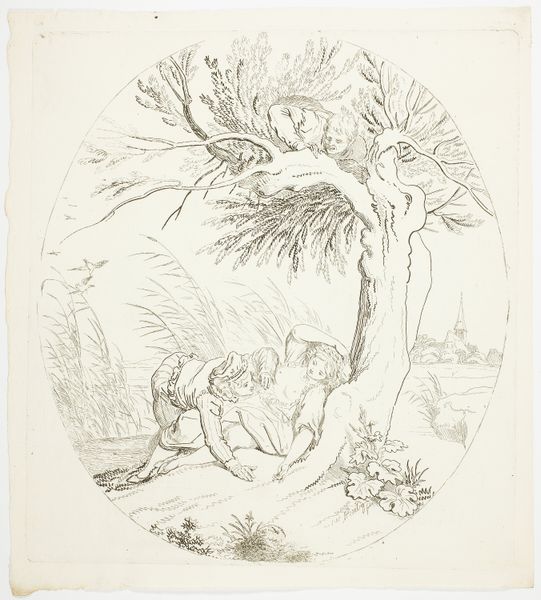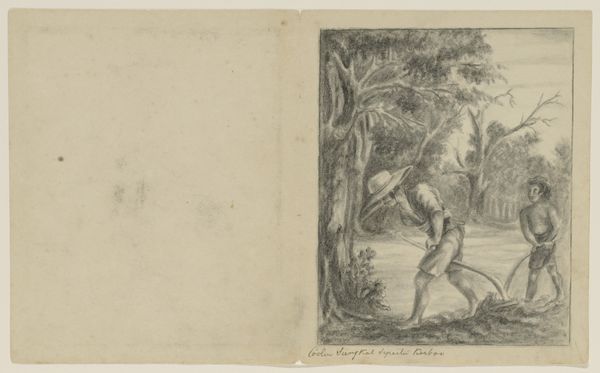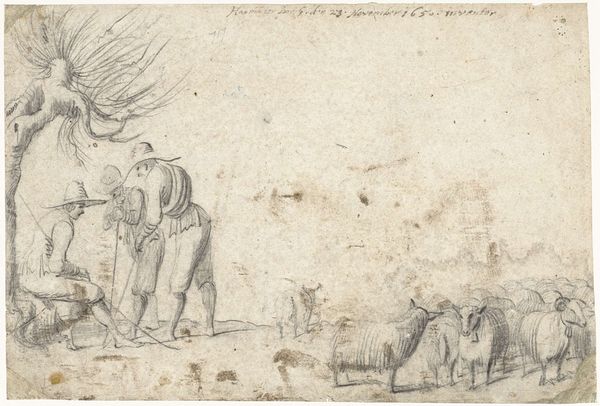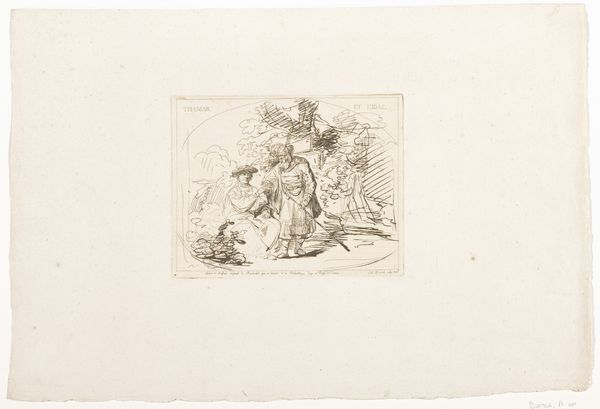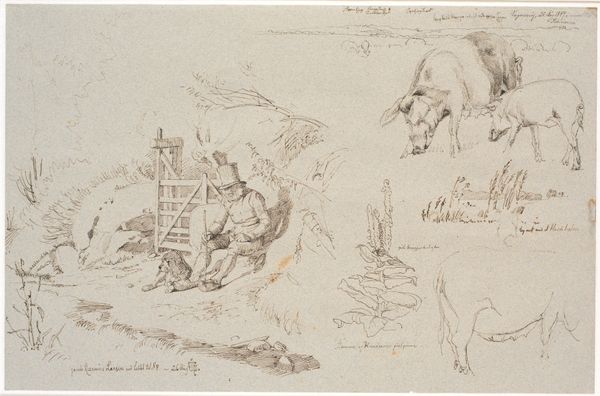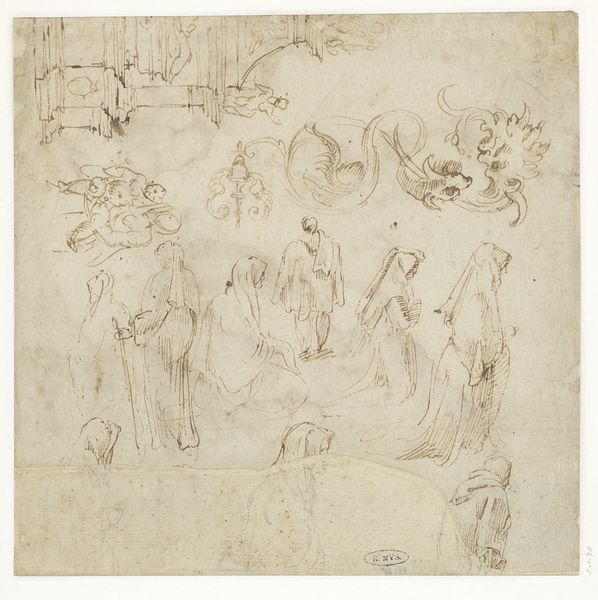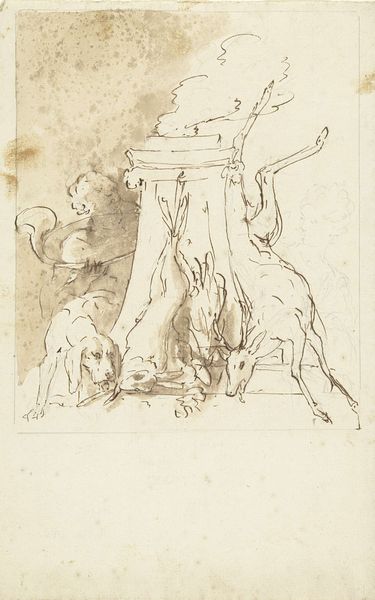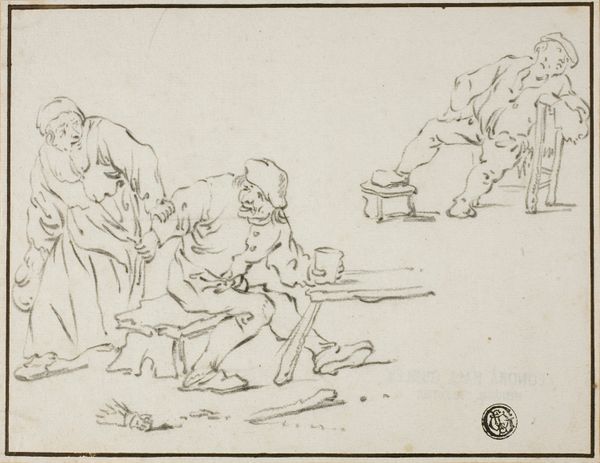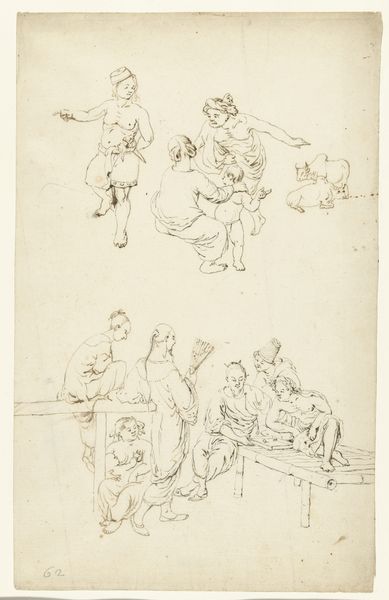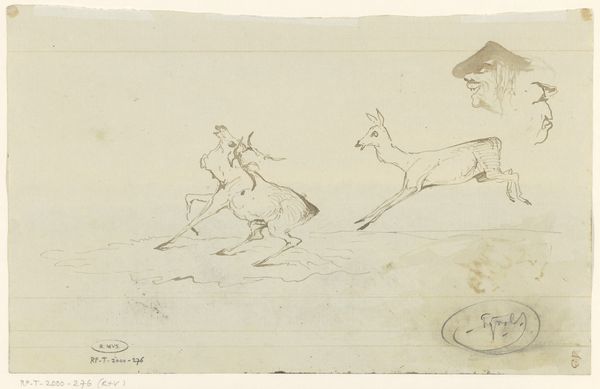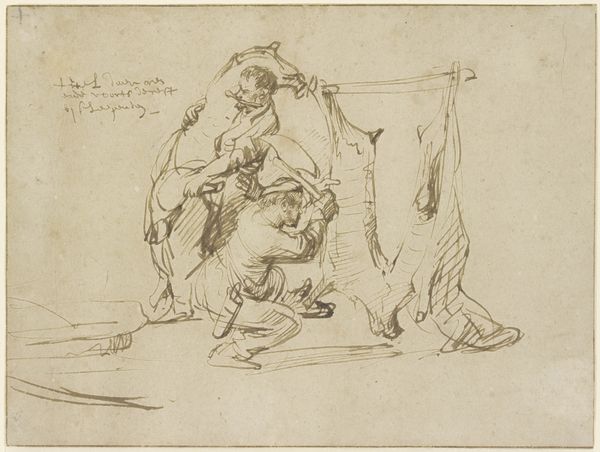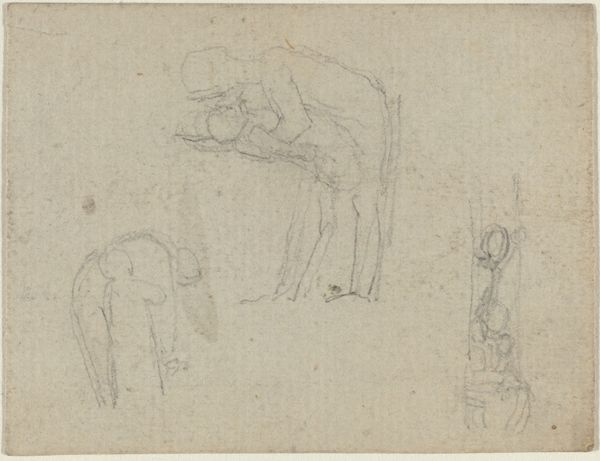
drawing
#
drawing
#
toned paper
#
quirky sketch
#
pen sketch
#
personal sketchbook
#
ink drawing experimentation
#
pen-ink sketch
#
sketchbook drawing
#
watercolour illustration
#
sketchbook art
#
watercolor
Dimensions: 141 mm (height) x 150 mm (width) (bladmaal)
Curator: This drawing is titled "Tre svin, halvfigur af ung mand," which translates to "Three Pigs, Half-Figure of a Young Man." Johan Thomas Lundbye created it around 1840. Editor: My initial reaction is charmed bewilderment. The artist’s swift, delicate inkwork lends this humble paper a peculiar vivacity. There’s a marvelous sense of animation, capturing a lively interaction, juxtaposed with serene human observation. Curator: Indeed. The juxtaposition is key, isn't it? Lundbye, living during a period of immense agricultural reform in Denmark, consistently used animal subjects in his landscape paintings as signifiers of the natural world under threat. Here, he brings those animal subjects—the pigs—to the foreground, pairing them with the figure of a bourgeois gentleman, suggesting the clash between modernization and traditional rural life. Editor: A fascinating interpretation! Formally, I’m drawn to the balance Lundbye strikes with his composition. The intricate hatching defines the musculature of the pigs and the man's tailored clothing, lending surprising realism to the scene. The subtle gradations of tone achieved with watercolor give the sketch depth and texture. Curator: Absolutely, and there's a certain irony embedded. While Lundbye romanticized rural Denmark, he was also part of a bourgeois class, observing and depicting the transformation rather than actively participating in agricultural labor. He himself was conflicted on what progress really means to Denmark and its population. Editor: It’s almost a pictorial embodiment of sociological tension! Look at the careful rendering of the man's coat, in direct contrast with the looser lines describing the vegetation and the whimsical curly-Qs at the top left. One may see an ordered sensibility imposing itself on a space of organic vitality, and perhaps longing. Curator: Precisely. His choice to feature pigs might also allude to contemporary classist and ableist perceptions—a not-so-subtle visual critique through these semi-domesticated, sometimes-scorned creatures. Editor: It all brings such layered complexity into what appears, at first glance, a simple pen and watercolor sketch. The artwork has quite the hidden story that opens itself with close analysis. Curator: Right. It serves as a potent reminder that art provides not only aesthetic pleasure but can act as a form of sociopolitical discourse as well. Editor: The kind of discourse, I might add, that continues to invite more dialogue with our contemporary understandings. Thank you for that perspective.
Comments
No comments
Be the first to comment and join the conversation on the ultimate creative platform.
